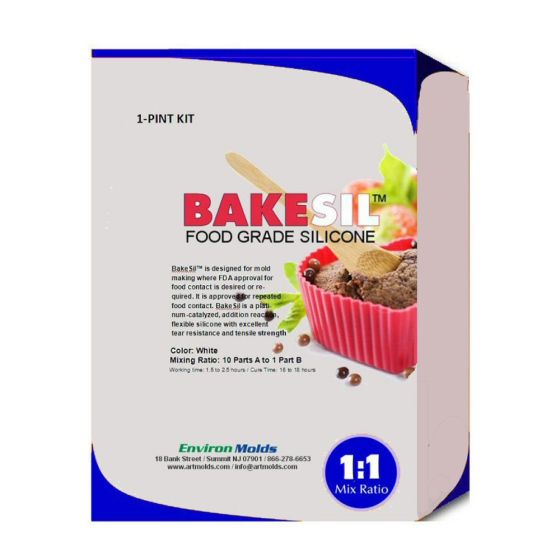Silicone rubbers are widely valued for their flexibility, durability, and precise detail reproduction in mold-making. Whether used for casting resin, plaster, wax, or even food-grade materials, silicone rubber molds offer reliable performance and excellent longevity- when maintained correctly. However, without proper care, these molds can deteriorate, tear, or lose their elasticity over time. This blog offers expert guidance on how to properly care for and store your molds to extend their service life and protect your investment.
Why Silicone Rubber Mold Maintenance Is Essential
Silicone rubbers are known for their exceptional mold-making properties, including resistance to heat, chemicals, and deformation. But even the highest-quality silicone rubber can degrade prematurely if not handled and stored with care. Proper maintenance ensures your molds continue to deliver sharp details, consistent results, and minimal wear across repeated uses. More importantly, extending mold life saves time, effort, and costs in the long run.
Select the Appropriate Release Agent Based on the Casting Material Used
Not all casting materials interact the same way with silicone rubber. Some substances, particularly certain resins or plasters may adhere more aggressively to the mold surface. Applying a compatible mold release agent is one of the most effective ways to preserve mold integrity.
A few important considerations:
- Always select a release agent designed specifically for the material you’re casting.
- Avoid petroleum-based products unless they are explicitly recommended for use with silicone molds.
- Apply the release agent evenly to prevent buildup that could affect detail reproduction.
Regular use of an appropriate release agent significantly reduces the chance of surface damage and sticking.
Ensure Silicone Rubber Molds Are Completely Cured Before Use
Prematurely using a mold that hasn’t completely cured can lead to deformities and reduced durability. Curing time for silicone rubbers depends on factors such as temperature, humidity, and the specific product formulation. It’s important to follow the manufacturer’s specifications for full cure times.
Using a mold before it’s fully set may result in:
- Internal tears or weak spots
- Shortened mold life
- Poor casting quality
Ensuring complete curing creates a resilient mold base ready for consistent use.
Store Silicone Molds in a Cool, Dry Environment
Environmental conditions play a crucial role in determining the lifespan of your silicone molds. Excessive heat, sunlight, or humidity can lead to drying, warping, or even chemical breakdown of the material.
Follow these storage best practices:
- Keep molds in a dust-free, temperature-stable environment.
- Avoid direct sunlight and UV exposure.
- Store molds lying flat or supported in their natural shape to avoid permanent deformation.
Controlled storage conditions help retain the original elasticity and form of your molds over time.
Clean Gently After Every Use
After each casting session, molds should be cleaned thoroughly but gently to remove any residue. Harsh scrubbing or aggressive cleaning solutions can damage the mold surface, affecting its ability to capture fine detail.
Recommended cleaning practices include:
- Clean most residues using warm water combined with a gentle soap.
- Use a soft brush or sponge to remove stubborn residues.
- Avoid abrasive tools or solvents unless confirmed safe for silicone.
A clean mold surface reduces wear and enhances casting clarity.
Rotate Between Multiple Molds for Large Production Runs
If you're casting multiple pieces in succession, consider using two or more identical molds in rotation. Continuous casting in a single mold without adequate rest can overheat or stress the material.
By rotating molds:
- You allow each one time to cool down and recover.
- You prevent heat fatigue and surface distortion.
- You extend the effective working life of each mold.
This approach is especially useful in commercial or high-volume settings.
Handle Molds with Care During Demolding
While silicone molds are known for their flexibility, they are not indestructible. Rushing the demolding process or using sharp tools can cause unnecessary stress and eventually lead to rips or loss of shape.
Tips for careful demolding:
- Let the casting material fully cure or harden before removal.
- Use even pressure and start peeling from one edge.
- Avoid pulling too hard or twisting the mold unnaturally.
Gentle handling ensures you preserve the Mold’s shape and usability for longer.
Conclusion: Keep Your Silicone Rubber Molds Performing Like New
Caring for your silicone rubber molds doesn’t require complicated tools- just attention to detail and proper handling. From selecting the right release agent to storing molds correctly and cleaning them gently, every step plays a crucial role in preserving their performance and extending their lifespan.
Whether you're crafting intricate resin art, producing functional prototypes, or casting food-grade products, well-maintained molds make all the difference.
Discover premium-quality silicone rubber products, mold-making tools, and expert advice at ArtMolds.com.
FAQs
- How long can a silicone rubber mold last with proper care?
With regular maintenance and proper storage, a silicone mold can last for several hundred castings, depending on the material being cast and usage frequency. - Can I reuse silicone molds for different materials?
Yes, but it’s crucial to clean the mold thoroughly between uses and apply a compatible release agent to avoid cross-contamination and sticking. - What causes silicone molds to crack or tear?
Frequent overstretching, improper demolding, or exposure to extreme temperatures can lead to cracks or tears in the mold. - Is using a release agent essential when working with silicone rubber molds?
While silicone is naturally non-stick for many materials, certain casting substances require a release agent to protect the mold and ensure easy demolding. - Can I repair a damaged silicone mold?
Minor tears may be patched using silicone adhesive, but significant damage often affects mold performance. It’s best to replace the mold when precision is compromised. - How should I store silicone molds when not in use?
Keep them in a cool, dry environment, protected from direct sunlight and heat sources. Keep molds flat or supported to maintain their original shape and prevent warping.























